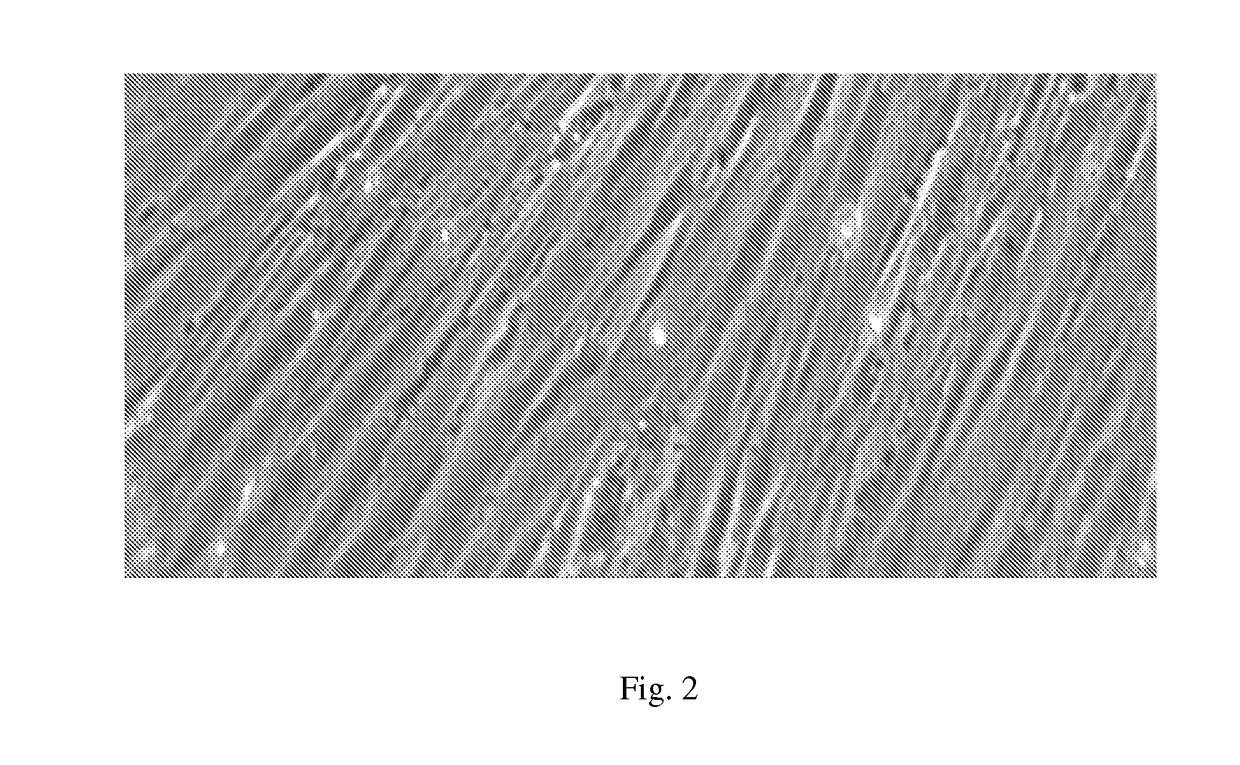Compositions and methods for treating bone, joints and cartilage
a technology of cartilage and collagen fibers, applied in the field of collagen and joint composition and methods, can solve the problems of collagen fibers becoming susceptible to degradation and degeneration, loss of cartilage, and loss of collagen
- Summary
- Abstract
- Description
- Claims
- Application Information
AI Technical Summary
Benefits of technology
Problems solved by technology
Method used
Image
Examples
example 1
[0047]A skin biopsy from the occipital area of the scalp is obtained from a subject as follows. Briefly, once an appropriate area of the scalp has been selected, it is shaved with hair clippers, ensuring some stubble remains. The biopsy area is then thoroughly disinfected and anaesthetized. Once anesthesia has taken effect, a 4-10 mm deep punch biopsy is gently removed from the biopsy site and the incision closed with sutures which can be removed 12-14 days later. The skin biopsy is then packaged under aseptic conditions into a pre-labelled biopsy tube containing biopsy transport medium, composed of DMEM / Hams F12 with antibiotics.
example 2
Isolation and Cultivation of NBDS Cells
[0048]A sterility test is performed on the medium in which the biopsy has been transported to ensure the sample is free from contamination, or alternatively, if the sample is contaminated to ensure that medium with antibiotics is subsequently utilized. The biopsy is then washed several times to remove the biopsy transportation medium and any debris to prepare the tissue for subsequent processing. Hair follicles are processed in Hams F10 by cutting away the skin epithelium with a sterile scalpel and “plucking” or dissecting the whole hair follicle unit from the surrounding dermal tissue using sterile forceps. The hair follicle is gripped with a forceps as close as possible to the skin surface and the follicle exposed by pulling up on the hair in the hair follicle unit. Follicles in the anagen phase (growing phase of the hair cycle, indicated by the visible outer root sheath, and DSC of the hair bulb) are selected for further processing.
[0049]NBD...
example 3
Preparation and Administration of NBDS Cells into a Joint
[0052]The skin over the joint to be treated is first prepared for injection by application of a topical analgesia (e.g., EMLA-cream) for approximately one hour. Thereafter, the skin is washed and disinfected. NBDS cells, prepared as described above, are then injected into the affected joint as a bolus or in a repetitive manner.
[0053]Alternatively, NBDS cells may be injected by arthroscopic guidance directly into the synovial fluid, or damaged cartilage or menisci, or ligaments, or into the bone defects arising from osteoarthrosis in order to fill the entire surface of the desired treatment area.
PUM
| Property | Measurement | Unit |
|---|---|---|
| Composition | aaaaa | aaaaa |
| Antimicrobial properties | aaaaa | aaaaa |
| Biodegradability | aaaaa | aaaaa |
Abstract
Description
Claims
Application Information
 Login to View More
Login to View More - R&D
- Intellectual Property
- Life Sciences
- Materials
- Tech Scout
- Unparalleled Data Quality
- Higher Quality Content
- 60% Fewer Hallucinations
Browse by: Latest US Patents, China's latest patents, Technical Efficacy Thesaurus, Application Domain, Technology Topic, Popular Technical Reports.
© 2025 PatSnap. All rights reserved.Legal|Privacy policy|Modern Slavery Act Transparency Statement|Sitemap|About US| Contact US: help@patsnap.com


